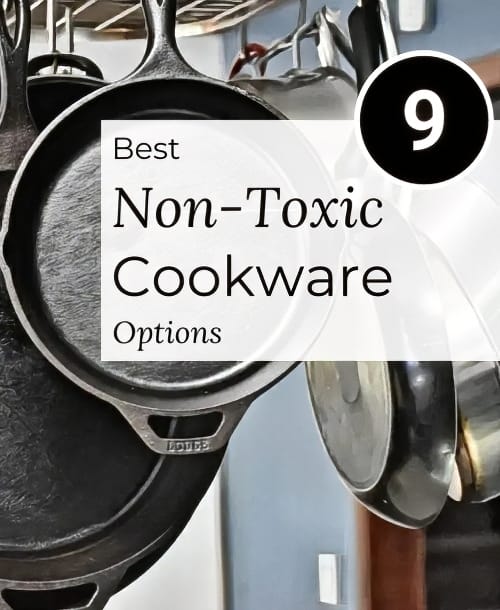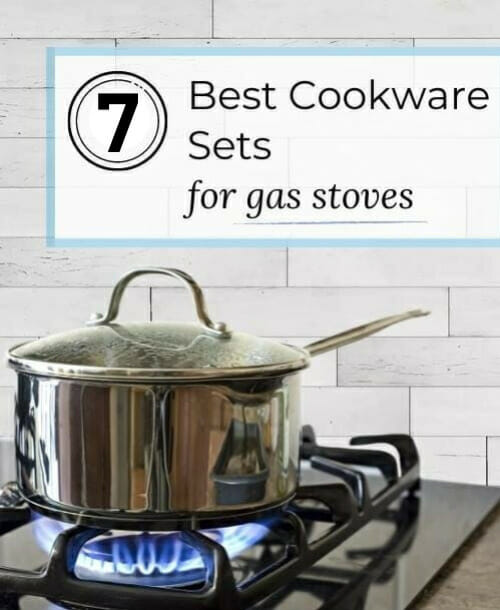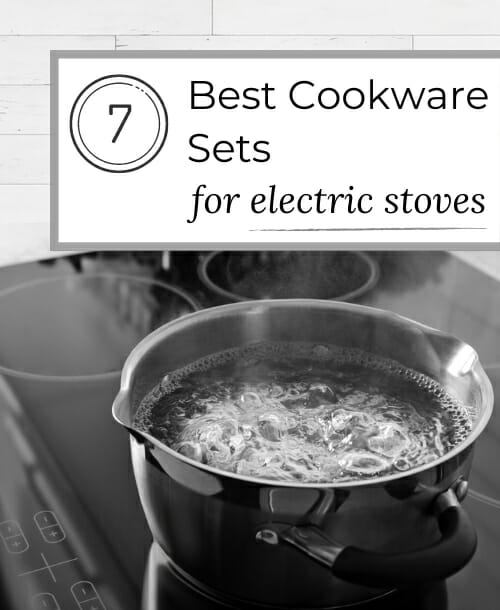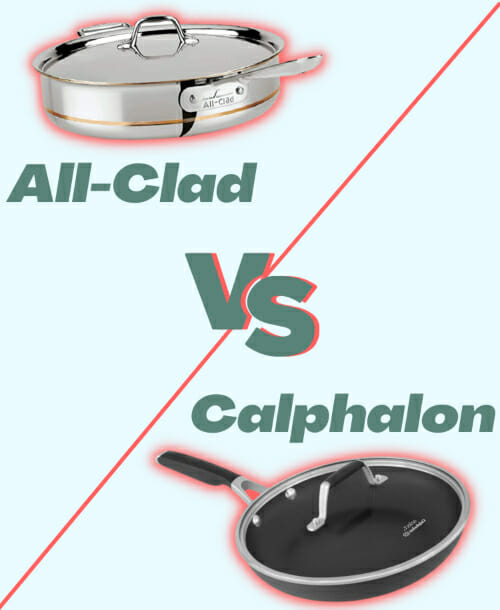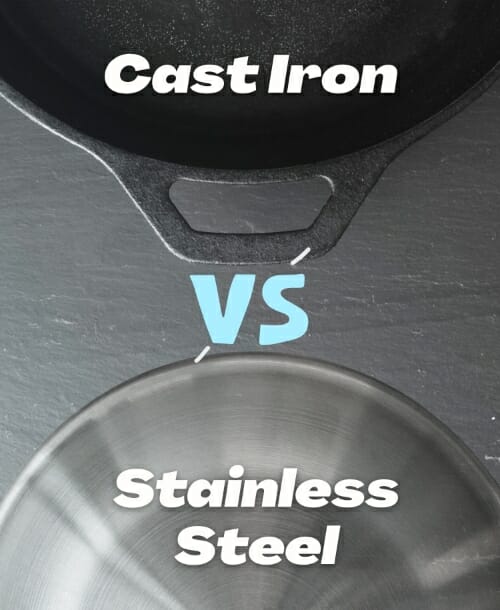
Both cast iron and stainless steel cookware are incredibly versatile tools. As a result, they’ve become popular in most home kitchens (and professional ones, too). However, although many people own both (which I recommend – more on that later), it’s difficult to understand which is better, cast iron or stainless steel pans.
And even more tricky, when you should use cast iron vs stainless steel… That’s where we come in.
While stainless steel is lightweight and better for acidic foods, cast iron is more durable and better for long, slow cooks and searing. These aren’t the only differences, though.
Below, we’ll review cast iron and stainless steel cookware’s main pros and cons to help you understand which is right for you.
We’ll also explore in-depth the main features setting them apart, like weight, durability, and maintenance. Or, if you’re looking for a quick comparison, head straight to our final thoughts on cast iron skillets vs stainless steel.
Overview: Cast Iron vs. Stainless Steel’s Benefits and Disadvantages
Before we get into specifics, let’s define these materials and quickly discuss the main benefits and disadvantages of stainless vs cast iron.
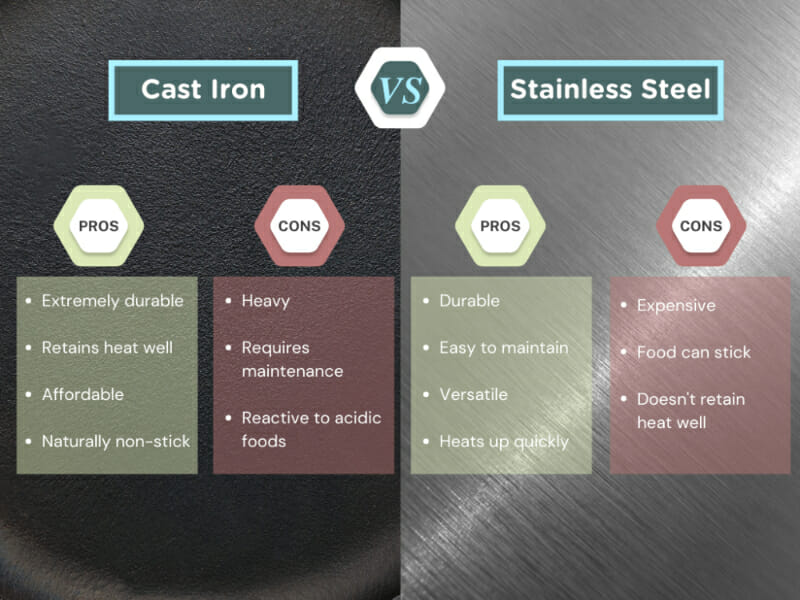
Cast Iron
Cast iron is an iron with a high carbon content that’s melted down and poured into a mold where it hardens. Once removed from the mold, workers polish, rinse, and sometimes coat the pan with an enamel glaze.
Non-enameled (raw) cast iron cookware requires seasoning, a process where you heat the pan with oil to build a protective, non-stick coating on the surface. On the other hand, enameled cast iron has a protective enamel coating on the outside. As a result, you don’t have to season it (yet it’s also somewhat non-stick). (For a truly nonstick pan, see our guide to best nonstick pans).
Cast iron is famous for retaining heat, as it’s an incredibly dense, thick material. Yet, although resilient, this makes cast iron heavy. Finally, bare (non-enameled) cast iron is reactive to acidic foods, which we’ll get into later.
Stainless Steel
Stainless steel is a refined type of iron that’s often mixed with chromium to produce a durable, rust-resistant, and non-reactive material. Unfortunately, stainless steel is a poor heat conductor. So most stainless steel cookware has bonded layers of conductive metal in the core, like aluminum or copper.
This process, known as “cladding,” helps the pan conduct heat better. Cladded stainless steel pans can include three layers of bonded metal, known as 3-ply, or five layers, known as 5-ply.
You can read more about this bonding process in our article: All-Clad vs. Calphalon brand stainless steel.
Alright, so we’ve done a high-level overview of cast iron vs stainless steel skillets— We understand what they are, how they’re made, and their key pros and cons.
Now let’s dive into the specifics and cover all the various features that set them apart…
The Details of Stainless Steel vs. Cast Iron: Features Compared
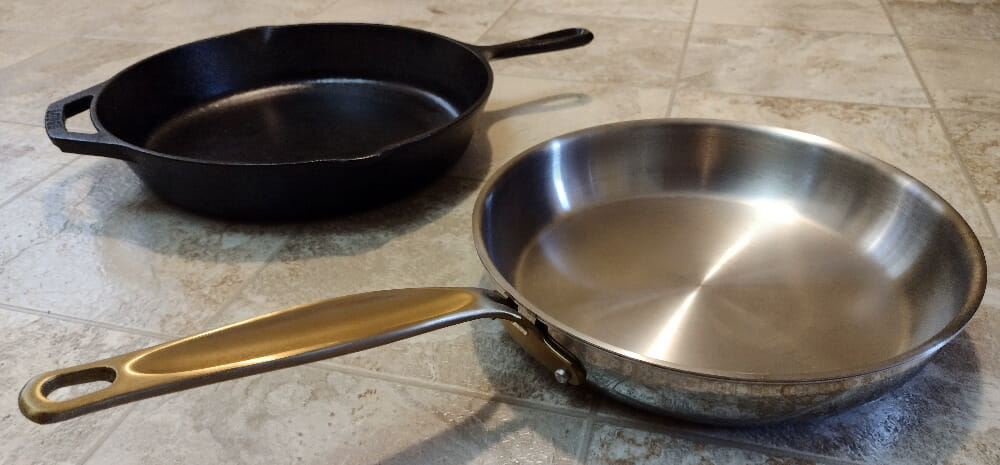
Both materials have unique features that are helpful to review, so you can understand where each shines. These include which material is best for different foods or cooking styles.
Also included are weight, durability, ease of care, and price. So let’s jump in!
Material
Stainless steel is an excellent material for cooking nearly anything. It’s sturdy and (relatively) lightweight, and the material heats quickly and distributes heat evenly.
The only real issue with stainless steel as a cooking surface is that food tends to stick. However, you can easily solve this problem by adding a little oil to the hot, empty pan before cooking – like this. Stainless steel is also worse than cast iron at keeping food warm, as it cools just as quickly as it heats.
Cast iron is a little more finicky; it requires some patience when starting a meal. Because this material is so dense, it takes a while to heat up. This is especially true if, like me, you have an electric cooktop. However, cast iron retains heat better than stainless steel once it does heat up. This heat retention offers a range of benefits, which we cover just below.
A well-seasoned cast iron pan also benefits from a natural non-stick coating (no Teflon!). But it’s important to note that adding food to cold cast iron will cause sticking, so again, ensure you preheat/ oil properly.
When To Use Cast Iron vs Stainless Steel Cookware
Stainless steel is the clear choice for most daily cooking. It heats up quickly (when cladded), making quick meals easier. Plus, you can use it with all types of food, including acidic dishes – unlike cast iron. Stainless steel pans are oven-safe, so long as the handles are, too. Plastic or wooden handles can not go in the oven.
Most stainless steel can withstand up to 500℉ (260℃), but always check your cookware’s instructions for its temperature rating before baking.
Now, there’s nothing you can’t cook in stainless steel. But cooking foods that often stick (like eggs) can make cleanups a nuisance. We recommend cooking eggs in a cast iron or non-stick pan.
Cast iron shines for “low and slow” cooking processes, like roasting, baking, or even moving a dish from stovetop to oven. Why? Heat retention. Pan temperatures stay more consistent in cast iron, so food cooks more evenly.
Also, in comparing the meat-searing abilities of cast iron vs stainless steel pans, cast iron is the clear winner. We can again thank iron’s dense, heat-retaining structure, which helps prevent temperature drops. For example, if you toss a cold steak in a hot cast iron pan, the pan will maintain its temperature better than steel. This allows the pan to sear on contact rather than cool down and simply roast the meat.
Here are a few foods you shouldn’t cook in a cast iron:
- Acidic foods: Don’t cook acidic foods like tomato sauce or citrusy/ vinegary dishes in cast iron. It’s a reactive material, which means acids can leach tiny metal molecules into your food. While this is safe (and can help keep your iron levels up!), acidic dishes may taste slightly off. This is because they contain leached iron! Acidic foods can also break down cast iron’s seasoning layer, hurting its non-stick coating and, ultimately, its longevity.
- Delicate foods: Delicate meats, eggs, or flaky white fish can be challenging to cook in cast iron. Even less delicate fish like salmon may adhere to the pan’s surface. That said, you can cook these foods in cast iron without sticking… Just make sure to properly preheat and oil your pan. Still, keep this in mind about seafood—
- Pungent foods: Cast iron is a porous material that tends to absorb food flavors. Avoid cooking anything super smelly, like fish, if you don’t want your next meal to taste like fish also!

Durability
Cast iron and stainless steel are both highly rugged materials – scratch-resistant and naturally strong. Yet there are still a few things to keep in mind:
Stainless steel is a lighter metal than cast iron; it can warp more easily. To prevent warping, avoid sudden temperature changes. Let the pan cool before cleaning. Also, opt for durable, “fully-clad” stainless steel cookware (more layers of metal means higher durability!).
Despite its susceptibility to warping, stainless steel redeems itself with high corrosion resistance. It’s very unlikely to rust.
Cast iron is heavy, so it’s quite durable. However, it’s more brittle than stainless, so it’s more likely to crack. Cast iron can also rust if any moisture stays in the pan.
To avoid rust, always wipe your pan dry right after use – never air dry wet cast iron. (But don’t panic if you see rust. Simply remove the rust with a brush or sandpaper and re-reason your pan in the oven.) And be careful with temperature changes to avoid cracking the pan.
With proper care, stainless steel and cast iron can last a lifetime. And that brings us to care and cleaning!
Ease of Care: Maintenance and Cleaning
Cast iron demands more care than stainless steel, although both require some maintenance. Let’s review how proper upkeep and cleaning differ between cast iron and stainless steel…
Maintaining stainless steel is straightforward— Here are a few things you can do to keep it looking (and performing) well:
- Always preheat your (empty) pan adequately before adding oil. This helps avoid food sticking. How do you know when the pan is hot enough for oil? Watch this short tutorial.
- Heat your stainless steel gradually, avoiding drastic temperature changes, which can lead to warping.
- Avoid stacking your stainless steel; this can lead to warping and micro-abrasions.
- Hand-wash when possible. Even though some stainless steel items say they’re dishwasher-safe, hand washing helps avoid discoloration.
Maintaining cast iron is a little more labor-intensive— Cast iron without an enamel coating requires seasoning, a process in which oil is added and the pot or pan is exposed to heat. This creates a patina, a protective layer that is naturally non-stick.
Once the cast iron is seasoned, it will require occasional re-seasoning, especially if you cook acidic foods. (Acids strip seasoning.) Yet, cooking fatty, non-acidic foods will actually help build and maintain this layer!
But, there are a few other things to keep in mind to protect your cast iron:
- Avoid highly-abrasive cleaning tools like steel wool. It can break down the protective patina.
- Avoid using harsh dish soap to clean your cast iron. Instead, scrub food debris with a brush and hot water. Coarse sea salt helps too. If you decide on using soap, opt for mild detergents only.
- Never use the dishwasher.
- Oil the pan after each use before storing. Vegetable oils work best.
- Re-season your cast iron occasionally (2-3x per year).
- Don’t store food in cast iron, especially acidic foods.
Price
Cast iron wins on price. This is because its manufacturing process is much simpler than stainless steel. Workers simply pour raw iron into cookware molds. As a result, most cast iron pans range from around $20 – $60, depending on the size.
Enameled cast iron is often much more expensive, although this also ranges by size and brand. For example, this enameled cast iron skillet from Bruntmor is cheaper than Le Creuset’s. Despite being a smaller pan, Le Creuset’s high-end name raises its price.
Stainless steel must be refined and bonded with a conductive core (i.e., aluminum) to help it conduct heat better. This means its manufacturing process is more complicated and uses various metals, making stainless steel a bit pricier than bare cast iron.
The most expensive stainless steel includes fully-clad options like All-Clad, which can cost hundreds of dollars per pan. However, you can find slightly lower-quality stainless steel for much less.
Explore our product recommendations for budget-friendly, high-quality stainless steel cookware in our All-Clad vs. Calphalon Cookware Comparison.
The Bottom Line on Stainless Steel Pans vs. Cast Iron
Ultimately, stainless steel can cover you in most of your day-to-day cooking. It wins on material versatility, weight, and ease of care. You can cook anything in stainless steel, it’s lightweight and rust-resistant, and you don’t need to season it. The only downsides are that stainless steel is more prone to warping and costs more than cast iron.
Cast iron is the clear choice if you’re searing meat, roasting, and baking. Its ability to retain heat and its extreme durability make it perfect for these uses – and it’s reasonably priced! However, cast iron is slightly harder to care for, it’s heavy, and you can’t cook everything in it (i.e., acidic foods).
The bottom line: One is not better than the other. Rather, they are different tools for different jobs.
You probably want most of your pots and pans to be stainless steel rather than cast iron. However, a good cast iron skillet, dutch oven, and griddle will go a long way for slow cooking or searing hearty meats.
So, I’d start with getting a complete stainless steel cookware set to cover all the bases, including acidic foods. Then, pair that with one or two cast iron pieces for when you want a perfectly seared steak or tender braised ribs and stews.
Ready to learn more about stainless steel and cast iron? Check out these posts:

Hi there! I'm Adam, author and founder of TGL. Since 2016, I've produced and sold non-toxic kitchenware throughout the US. Today, I'm using my passion and experience in sustainable product manufacturing to help families avoid unsafe reusable foodware. When I'm not writing, you'll find me hiking or camping throughout Appalachia!
Enjoyed this post? Share it with your friends!
Related Posts

